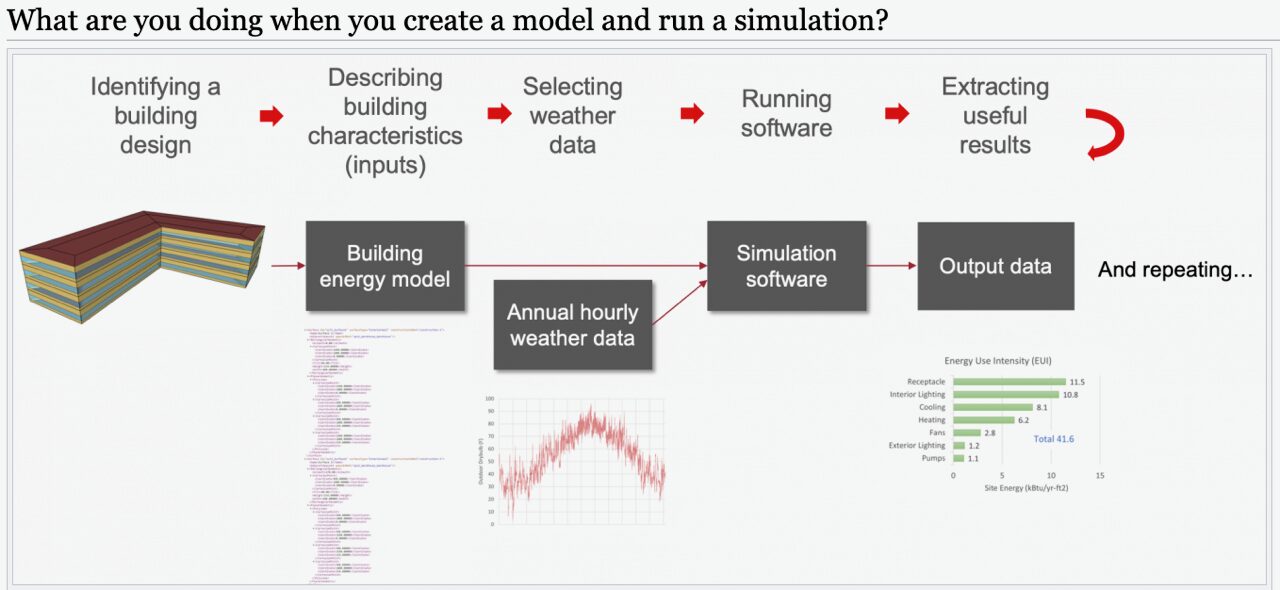-Prof. Wellwisher
Dear Prof. Wellwisher, Wherever I go, at least one professor asks the question, “What can I do to better prepare students for the building simulation industry?”. The question often leads to a really fiery and interesting discussion. So no doubt this is a burning question of the moment apart from, of course, how to save this world and if Indians should celebrate Rishi’s appointment as the UK Prime Minister or not. As an emerging professional with all my university experiences and challenges still afresh in my mind, I can confidently say that understanding the question is more important than the answer. When you understand the challenges students face in their transitioning period, the solutions follow and bring in various amazing ideas for implementation with it. For students the biggest challenge is how to begin the job search. Often students tend to send emails to professionals or connect with them over LinkedIn inquiring about open positions without a good understanding of various building simulation jobs available in the market and their corresponding responsibilities. For professors, the challenge is the confusion about what needs to be taught so that students are universally equipped to take any job in the building simulation industry. Having interacted with various AEC firms on a daily basis to do multiple workshops and training as a part of my job, I have often heard about collaboration issues between architects and engineers or consultants. Thus, for employers, the challenge is to find young professionals with a quality of team playmanship (yes, this is a real word!) apart from technical expertise.
“3 solutions” to 3 above mentioned challenges based on my own personal experience: NBC (No, not National Broadcasting Company)
“N” for Networking: When I was siloed to my own research during the pandemic, my academic advisor notified me of a volunteer role for IBPSA-USA as a note-taker for two different focus groups. It provided me with an opportunity to interact with experienced professionals and led to a leadership role as a Student Director followed by a Director role for the same organization. People cannot notice you when they don’t know you even exist. Bringing opportunities, no matter how big or small, and educating or motivating students to Network with industry experts is a great way to get them involved and prepare them for the job market without someone having to send 20 emails as referrals.
“B” for basics: Nowadays I see various employers in the building simulation industry are opening numerous positions and I envy that because I am a pandemic graduate and faced a hiring freeze (don’t worry, I managed to get an amazing job). However, they all have different requirements for the proficiency of tools they run the analysis on, so it can often get difficult for the professors and students to decide on which one to teach and learn. The key here is to learn and be prepared with the Basics. If a student has a good understanding of the heat transfer process between the surroundings and the fabric of the building, it won’t be difficult to click on a button and make a decision if higher wall insulation can affect that building’s Energy Use Intensity or not. With the firm foundations of the subject, one can quickly adapt to the new tool or software that the company is asking for. Of course tools provide automation and speed up the process, so having some basic understanding of the popular tools and data science languages such as Python and R would provide added benefits in the job search. However, I do want to emphasize that intelligence and understanding is what makes a student stand out in the job market.
“C” for collaboration: Collaboration, the act of working together, drives the entire world. No one person can run a business, school, country or a relationship for that matter. Individuals often become accustomed to competing in school, but good employers love to see employees collaborate. It leads to better decisions because then they cater to a wide and diverse audience that will always consist of different perspectives and alignments. Back in my school, once we learnt the basics, we were introduced to a new course where we as building performance experts had to work with final year M.Arch students as their consultants. Each of us worked for 2 different students running analysis (daylight, energy, thermal comfort etc.) that was beneficial for them to make their design decisions. This is the greatest experience I try to share with as many people as I can because it did not only familiarize us (building performance students) with the industry, but also prepared “about to graduate” architects on how to collaborate with their consultants and take suggestions on improving their designs.
These are my two cents (or maybe 3), but I really feel there is so much more to this question that can be addressed mainly because students will be our future leaders. They will soon be leading the way and addressing much more challenging issues than we currently have on our plate. Providing better education and guidance is our responsibility to make sure our industry is passed on to good hands for it to flourish and further save the world!
For students the biggest challenge is how to begin the job search. Often students tend to send emails to professionals or connect with them over LinkedIn inquiring about open positions without a good understanding of various building simulation jobs available in the market and their corresponding responsibilities. For professors, the challenge is the confusion about what needs to be taught so that students are universally equipped to take any job in the building simulation industry. Having interacted with various AEC firms on a daily basis to do multiple workshops and training as a part of my job, I have often heard about collaboration issues between architects and engineers or consultants. Thus, for employers, the challenge is to find young professionals with a quality of team playmanship (yes, this is a real word!) apart from technical expertise.
“3 solutions” to 3 above mentioned challenges based on my own personal experience: NBC (No, not National Broadcasting Company)
“N” for Networking: When I was siloed to my own research during the pandemic, my academic advisor notified me of a volunteer role for IBPSA-USA as a note-taker for two different focus groups. It provided me with an opportunity to interact with experienced professionals and led to a leadership role as a Student Director followed by a Director role for the same organization. People cannot notice you when they don’t know you even exist. Bringing opportunities, no matter how big or small, and educating or motivating students to Network with industry experts is a great way to get them involved and prepare them for the job market without someone having to send 20 emails as referrals.
“B” for basics: Nowadays I see various employers in the building simulation industry are opening numerous positions and I envy that because I am a pandemic graduate and faced a hiring freeze (don’t worry, I managed to get an amazing job). However, they all have different requirements for the proficiency of tools they run the analysis on, so it can often get difficult for the professors and students to decide on which one to teach and learn. The key here is to learn and be prepared with the Basics. If a student has a good understanding of the heat transfer process between the surroundings and the fabric of the building, it won’t be difficult to click on a button and make a decision if higher wall insulation can affect that building’s Energy Use Intensity or not. With the firm foundations of the subject, one can quickly adapt to the new tool or software that the company is asking for. Of course tools provide automation and speed up the process, so having some basic understanding of the popular tools and data science languages such as Python and R would provide added benefits in the job search. However, I do want to emphasize that intelligence and understanding is what makes a student stand out in the job market.
“C” for collaboration: Collaboration, the act of working together, drives the entire world. No one person can run a business, school, country or a relationship for that matter. Individuals often become accustomed to competing in school, but good employers love to see employees collaborate. It leads to better decisions because then they cater to a wide and diverse audience that will always consist of different perspectives and alignments. Back in my school, once we learnt the basics, we were introduced to a new course where we as building performance experts had to work with final year M.Arch students as their consultants. Each of us worked for 2 different students running analysis (daylight, energy, thermal comfort etc.) that was beneficial for them to make their design decisions. This is the greatest experience I try to share with as many people as I can because it did not only familiarize us (building performance students) with the industry, but also prepared “about to graduate” architects on how to collaborate with their consultants and take suggestions on improving their designs.
These are my two cents (or maybe 3), but I really feel there is so much more to this question that can be addressed mainly because students will be our future leaders. They will soon be leading the way and addressing much more challenging issues than we currently have on our plate. Providing better education and guidance is our responsibility to make sure our industry is passed on to good hands for it to flourish and further save the world!







